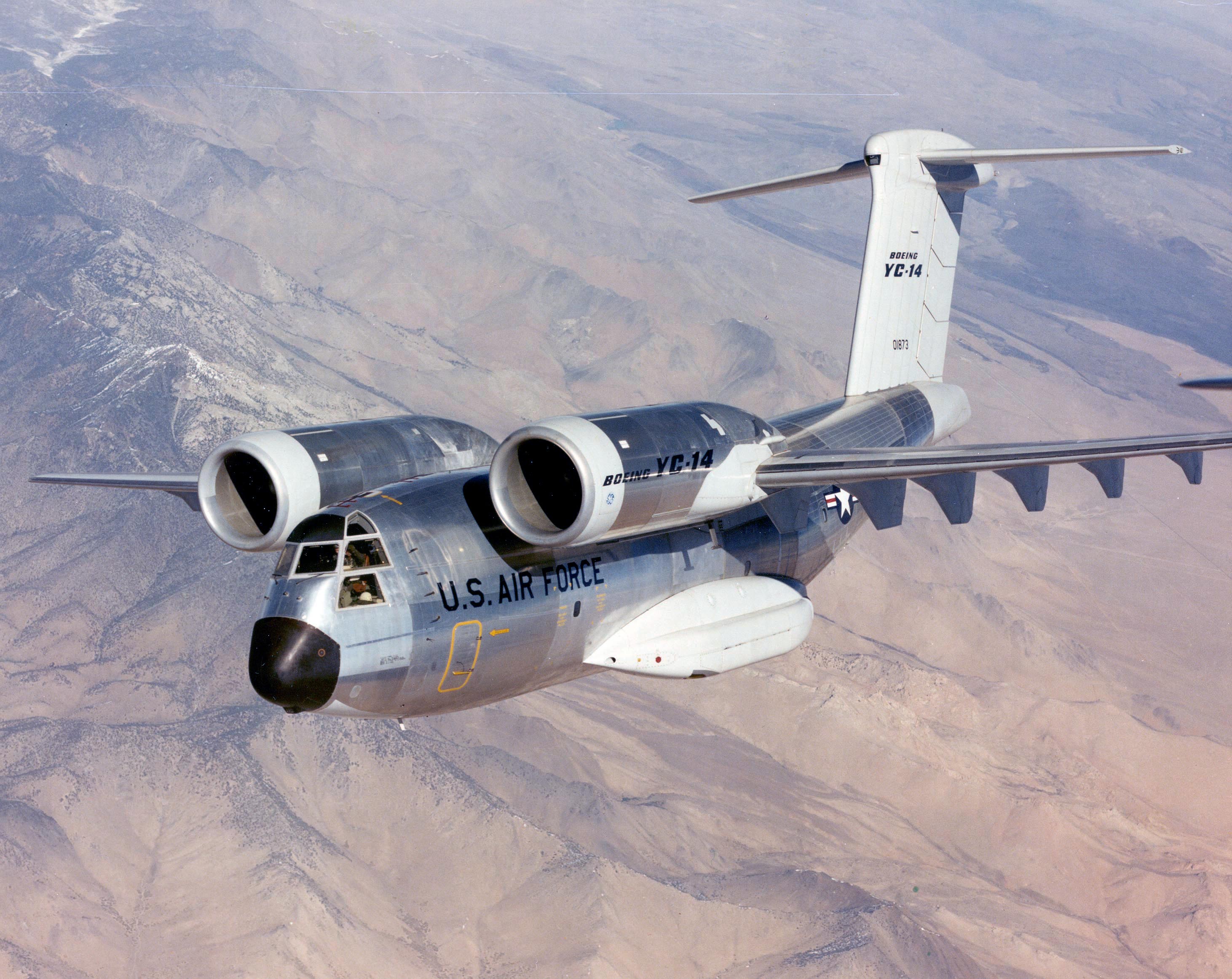The YC-14 military transport was built to carry troops and equipment into battle zones with short, temporary airfields. Cargo and wheeled vehicles could be loaded into the wide fuselage via a built-in tail ramp. The high-wing, two-engine YC-14 demonstrated excellent capabilities for short takeoffs and landings, while still capable of cruising with modern jet efficiency.
The Boeing YC-14 and McDonnell Douglas YC-15 were designed for the Advanced Medium STOL (Short Takeoff and Landing) Transport (AMST) program to meet the need for a large STOL cargo aircraft to replace the Lockheed C-130 Hercules. The YC-14 first flew in 1976 and a competitive fly-off against the YC-15 was completed in 1977.
Although the YC-14 never went into production, its two prototypes, built in 1976, introduced significant technological breakthroughs.
The upper-surface-blowing design for high aerodynamic lift used two jet engines that blew high-velocity airstreams over the inboard portion of the wing and over special trailing-edge flaps. The large multisection flaps extended rearward and downward from the wing's trailing edge to increase the wing area, thus creating extra lift, which was further augmented by positioning the engines so their jet blast across the upper wing surfaces created still more lift.
In addition, the placement of the engines above the wing prevented the engines from ingesting dirt and debris and shielded some of the engine noise from the ground so that the transport could make a quieter approach.
Another new feature was an advanced flight display using cathode ray tubes Boeing developed for the Supersonic Transport (in work at the time). The CRT flight display format was adapted for use on the YC-14 and later tested on the NASA 737 transport systems research vehicle to help gain acceptance for the "glass cockpit" concept, used on the Space Shuttle Atlantis.
The first flight of the YC-14 demonstrated superior STOL performance and low-speed maneuverability. Even with its 27,000-pound STOL payload, the YC-14's takeoff run was 1,000 feet, and it could land in a slightly longer distance. From a long runway, it could take off with 120,000 pounds.
- Crew: 3
- Capacity: 81,000 lb or 150 troops (STOL: 27,000 lb)
- Length: 131 ft 8 in (40.1 m)
- Wingspan: 129 feet (39.32 m)
- Height: 48 ft 4 in (14.7 m)
- Max takeoff weight: 251,000 lb (STOL: 170,000 lb) (113,850 kg (STOL: 77,100 kg))
- Powerplant: 2 × General Electric CF6-50D turbofans, 51,000 lbf (227 kN) each
- Maximum speed: 504 mph (811 km/h)
- Cruise speed: 449 mph (723 km/h)
- Range: 3,190 mi (5,134 km)
- Service ceiling: 45,000 feet (13,716 m)
- Rate of climb: 6,350 ft/min (1,935 m/mi


0 σχόλια:
Post a Comment